“I rediscovered the glorious bottom-end of the Fender… I feel far more fluid playing the Jazz Bass than I ever did on the Rickenbacker”: Geddy Lee went on a tonal quest and broke all the bass rules to make Rush sound huge
The Rush frontman charts his experiments in bass tone, and why he'd sometimes tackle the instrument like a lead guitarist
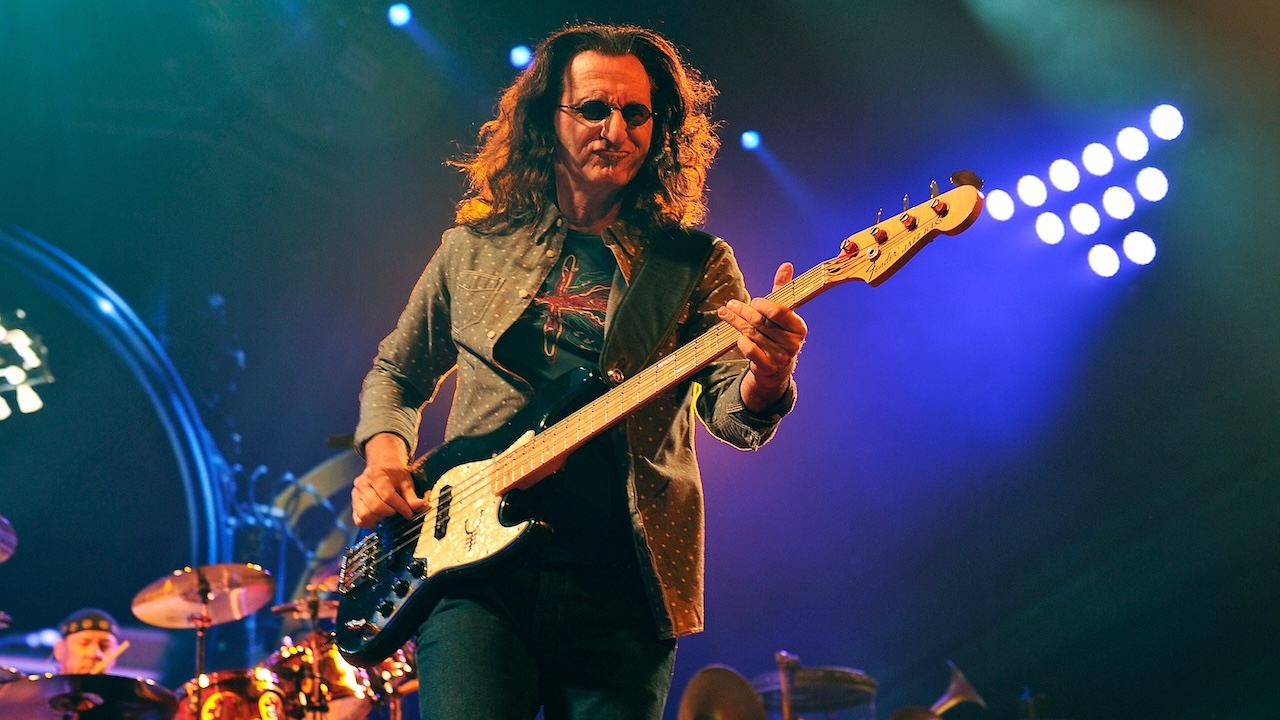
Geddy Lee is the rare type of bass player whose combination of talents creates a fiercely original voice. His vocal shriek is unmistakable; his bass guitar countermelodies, soaring and adventurous; his tone, in-your-face.
Combining his skill set with guitar alchemist Alex Lifeson's sonic concoctions and drum god Neil Peart's downright ridiculous chops, Rush achieved a sound that was undeniably huge.
“He’s Geddy Lee, you know. Nobody plays like him,” Les Claypool told Bass Player. “His phrasing is unbelievable. It’s almost like Paul McCartney, in that he is very melodic and in the way he phrases his bass parts. It’s almost lyrical.”
Lee was one of the first bassists to utilize a stereo bass rig. Around 1977’s A Farewell to Kings, he began using Moog Taurus bass pedals and a doubleneck Rickenbacker bass/guitar to create the lush soundscapes of the epic Xanadu.
“We wanted to have rhythm guitar behind some of Alex's solos,” Lee told Bass Player. “We figured the best way to do that was for me to play my double-neck Rickenbacker, and fill in the bottom end with the pedals. We eventually started using it to sneak other melodic parts in, as well, to fill out the texture.
“That set me on a road of experimentation that got to be a little insane – we were basically trying to invent MIDI before it was invented. We built unbelievably complex machines, some of which were total failures.
“I just accepted synth bass for a number of years, but I got frustrated not being able to play my No. 1 instrument. When MIDI came along, that changed everything. The combination of MIDI and sophisticated multi-note sequencers and samplers allowed me to make our records dense and interesting.”
Get The Pick Newsletter
All the latest guitar news, interviews, lessons, reviews, deals and more, direct to your inbox!
“We've always been obsessed with being able to play our records live as a three-piece – we didn't want other guys onstage. So that meant an increasingly complicated array of tools to help us accomplish it. And we wanted it to be performance-based, not taped.
“Eventually, it got to be too much for me, so Alex and Neil started triggering keyboard events, as well. As a bass player, it's important to know the rules – and the best ways to break them.”
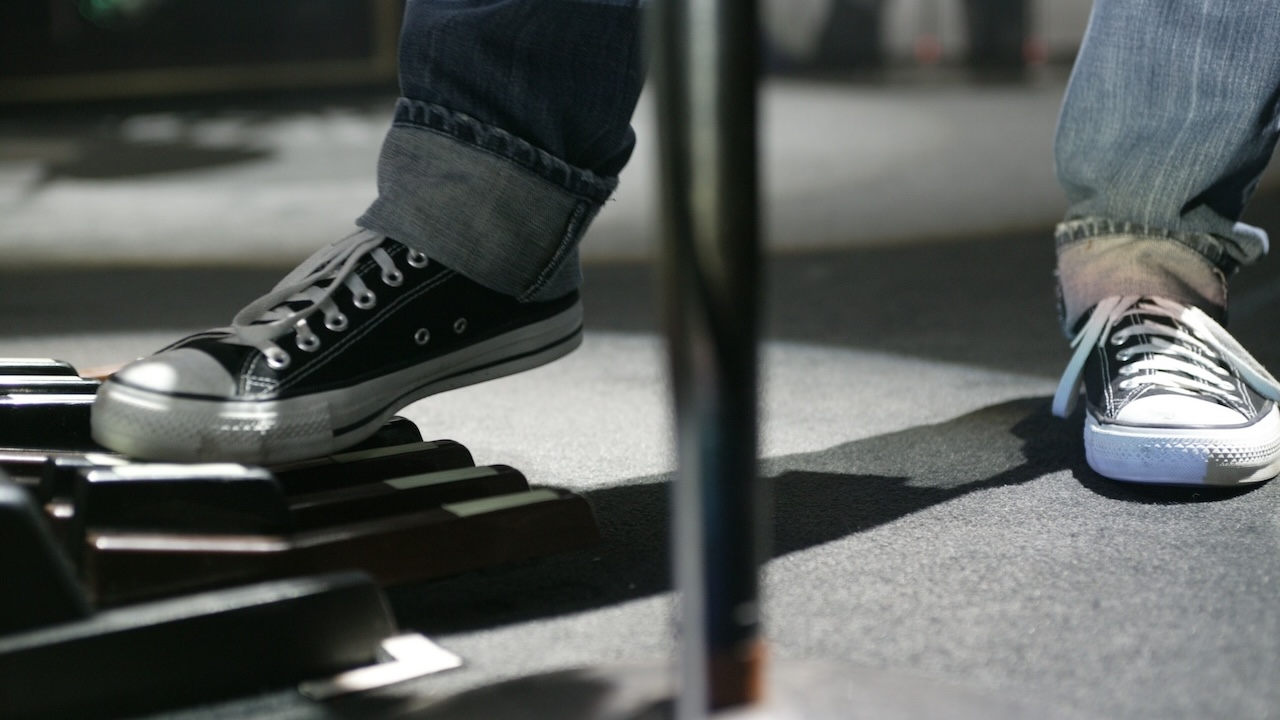
One thing was clear from Rush's live performances: Geddy always had a blast up there. “There was always such a positive vibe coming from our fans. I really fed off that – It instantly put me in a great headspace.”
The following interview from the Bass Player archives took place hot on the heels of the R30: 30th Anniversary World Tour in 2005, with the trio having begun writing a new album of original material, the first since 2002's Vapor Trails.
You’ve used a number of different basses through the '70s and ‘80s – Rickenbackers, Steinbergers, and Wals – but for the last 10 years, you've used your '72 Fender Jazz Bass almost exclusively. Why?
“When we started working on Counterparts, the band started going in a retro direction, sound-wise. I went back to using an Ampeg SVT, and I rediscovered the glorious bottom-end of the Fender – I haven't stopped exploring it since. I feel far more fluid playing the Jazz Bass than I ever did on the Rickenbacker.
“The Ricky was a real slam-bam kind of instrument that I had to play more aggressively. The action was high, because that was how I got the tone I wanted.”
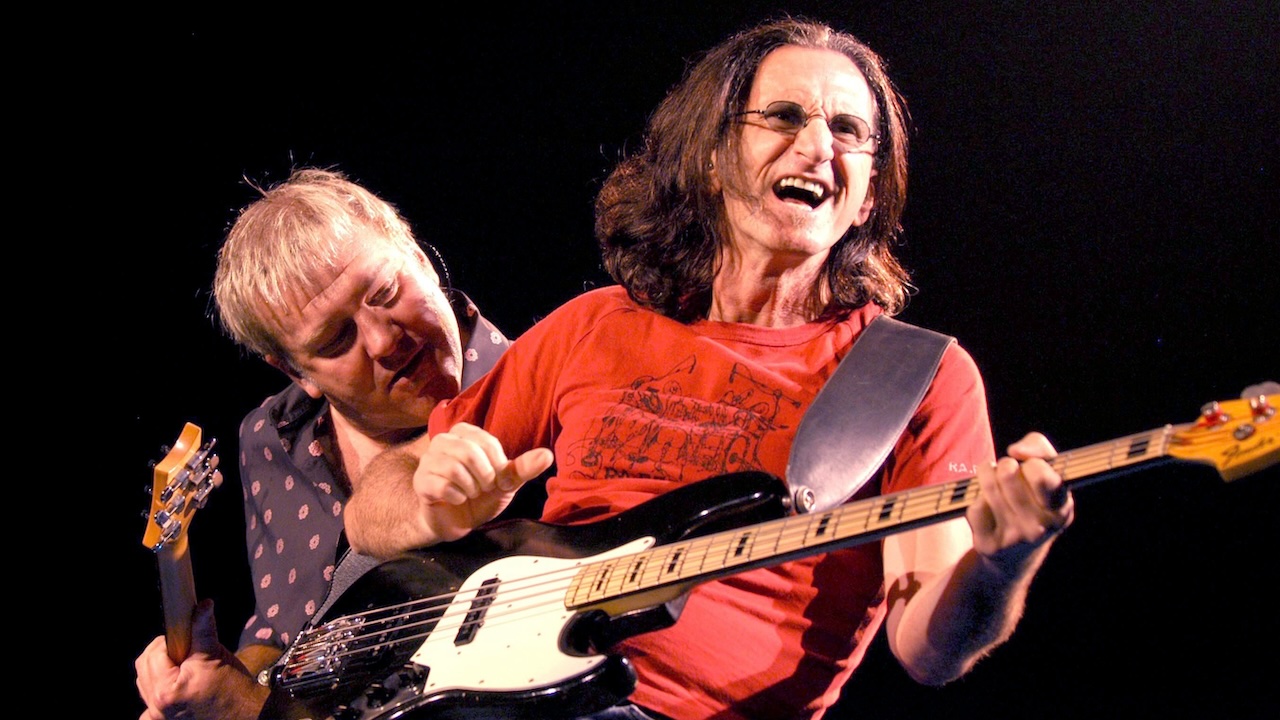
What were your reasons for switching basses?
“The Steinberger's size made it easier for me to move around between all my gear onstage. It had an interesting midrange honk, but it had an unsatisfying tone. It didn't have the top-end snap and bottom-end growl that I like.
“I started playing Wal basses when we recorded Power Windows because they're beautiful-sounding instruments with a tight, snappy high end.
“At the time, there was a slight bit more funk in how I was playing, snapping strings and playing chords way up the neck. I used lighter-gauge Rotosound Funk Master strings, which allowed me to play chords without taking up so much space in the sound spectrum.”
Has your tone changed very much through the years?
“Yes, a lot. In the early days, it was clangy top-end first, with a round but not overly aggressive bottom-end. In the mid '80s I started crunching it up a bit more with distortion and compression. It's continued to change with every record.”
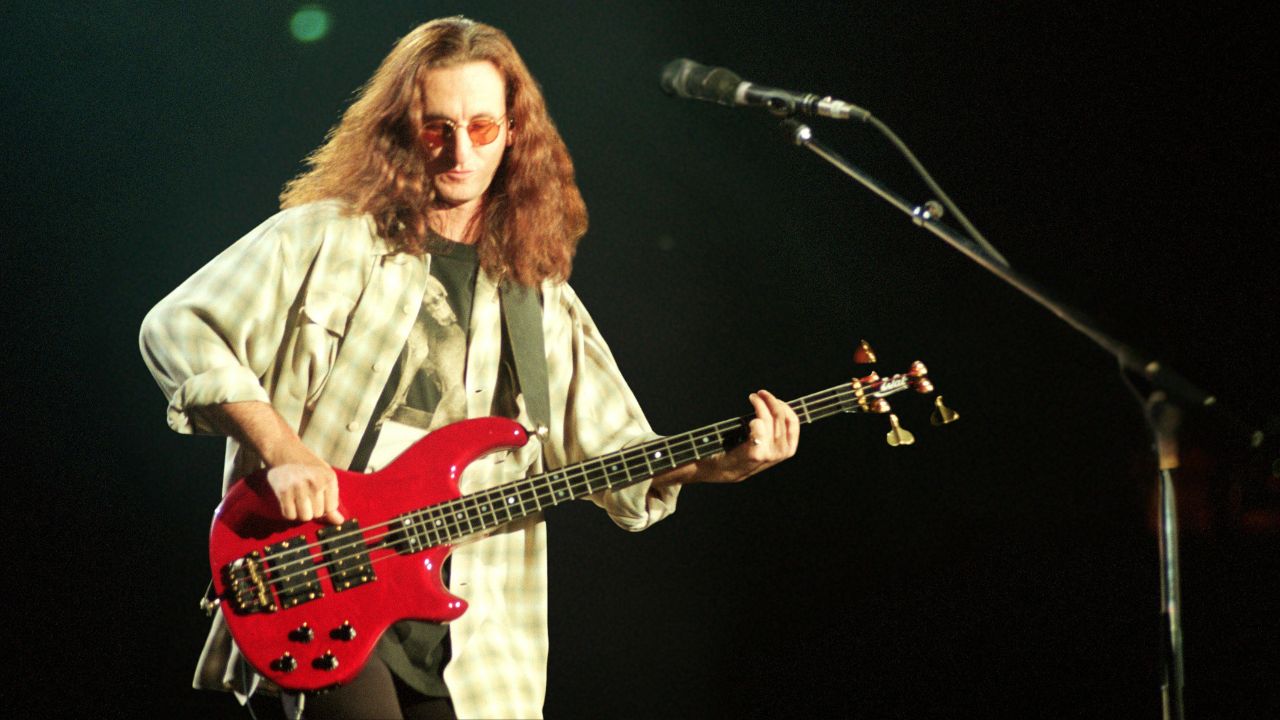
How do you keep from burning songs out?
“Sometimes just giving a song a rest and coming back to it can be great. Working Man is one song that we were totally bored with, and we gave it a break. We brought it back for the last two tours, and it's been really refreshing. It's a real three-piece jam song, and we all just have a blast.”
After playing with Alex for so long, I imagine you could identify him after hearing only a few notes. What are his stylistic hallmarks?
“He's one of the great builders of odd chords, and there's a very particular way he arpeggiates them. As a soloist, he's got a fluidity and a freedom of movement around the neck that's quite original.”
How would you describe Neil's rhythmic sensibility?
“In many ways, Neil's more rooted in jazz than in rock – even though he rocks pretty darn well. I think in his heart, he's a jazz player who's adapted to rock. He likes to play on the very back end of the beat.
“When he wants to rock, he'll flip his sticks over and use their butt ends, and when he wants to be more nuanced, he'll play with the tips, and he goes into a whole different kind of swing. He just has an incredibly deep tool kit, so many things to pull out. Plus, his hyperactivity is pretty well-known.”
![Rush ~ Working Man ~ R30 Tour ~ [HD 1080p] ~ September 24, 2004 at the Festhalle Frankfurt, Germany - YouTube](https://img.youtube.com/vi/XvG3dX43b8s/maxresdefault.jpg)
Do you play bass in your downtime?
“From time to time. Once in a while I'll go downstairs to my home studio and just pluck around. And I keep a bass lying around so I can just run my fingers up and down the 'board if I'm hanging out with the kids or watching TV. But I don't pay any serious attention to it unless I've got something coming up.”
Do you find yourself losing facility after a break?
“I used to really feel a fall-off when I was younger. Now I just feel refreshed. Alex has found the same thing to be true. It just takes less time to get back in shape. It used to be downright painful if I went too long without playing.”
Does songwriting feel natural, or does it take a lot of work?
“I have to really sit down and make myself go to work. But this last tour cycle lasted two years, and I'm ready to change gears. Working with new people is instantly inspiring, but if I'm going to be writing with Alex and Neil, I like to lie fallow for a while. Then when we do get together, I'm fired up to play.”
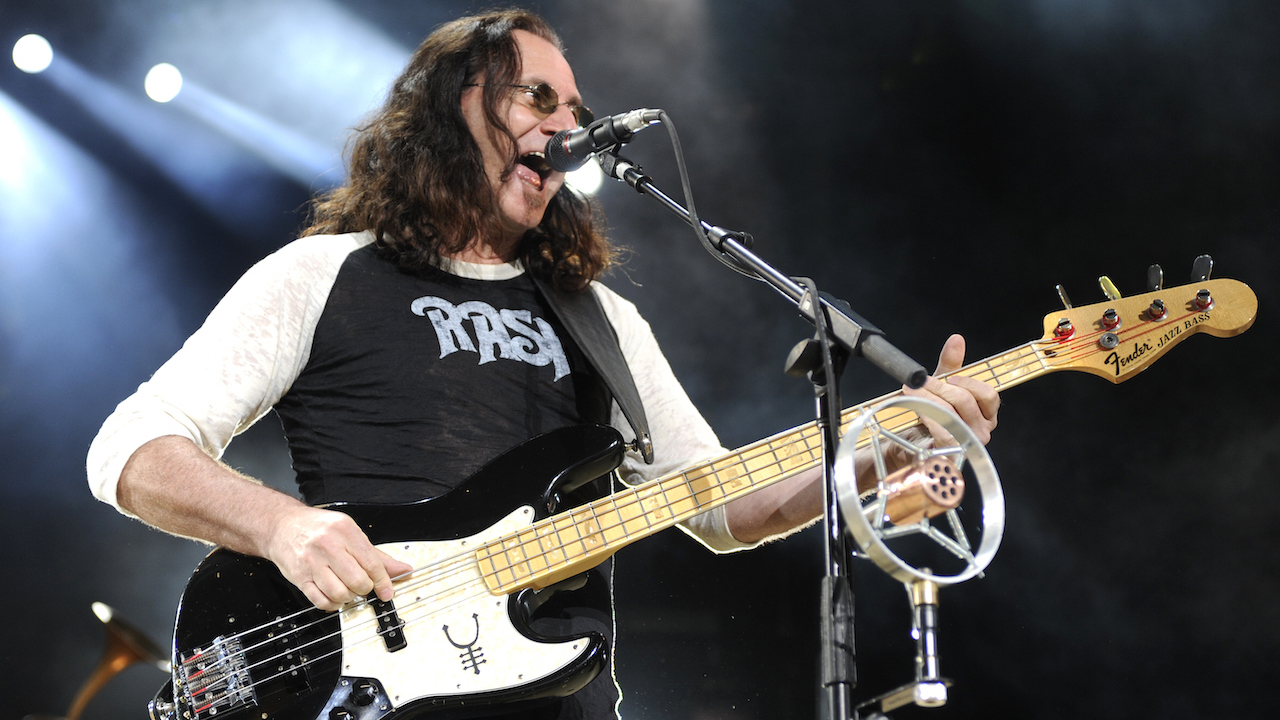
Has the writing process been the same for every record?
“It's always a little different. We never know what's going to happen until we get together and sit down. It usually starts with Alex and me getting together to have some dinner, drink some wine, and talk about what's been on our minds musically. Then we'll organize a writing room for ourselves with some decent sounds and good instruments, and try to make sure we're not bogged down by too much technology so we can jam freely.
“I'll have my Jazz Bass, and I'll keep my Taylor acoustic handy in case I have a guitar idea that I think might work. We'll start at my home studio, where I have a Logic Audio setup that I use to grab all our jams. If I feel there's something wonderful in those jams, I can cut them out and use them later.”
Which typically comes first, your basslines or your vocal melodies?
"It can go either way. If the vocals come first, I'll use bass like a guitar – to create a structure around that vocal melody. Then, if Alex likes that idea, we'll build a structure, and we'll decide if that initial bass sketch is still appropriate.
“If it's not, I'll write a line that better fulfills the song's bottom-end needs. Once Neil comes in, the bass track may change again. Often his approach to the rhythm will change what I do on bass.”
![R30 - Rush 30th Anniversary Tour - La Villa Strangiato/By-Tor and the Snow-Dog [HD] - YouTube](https://img.youtube.com/vi/J9RvC558gBE/maxresdefault.jpg)
What are some of the ways you push yourself creatively?
“The danger with playing bass is in looking at familiar blocks on the neck and always going there. It's most important to find different note combinations and not fall into those same patterns. I force myself to push beyond them, often by using double-stops or chords.
“When I'm recording, after I take one pass, I'll often have another go, to try a fresh approach. I find if I pretend I'm a lead guitar player, I can get into a new melodic area where I wouldn't normally find myself. I'm typically more concerned with keeping things rock-solid on the bottom.
“At the end of the day, it can result in a bunch of self-indulgent nonsense, but sometimes it'll do interesting things to the melody. I like that kind of experimentation.”
You must confirm your public display name before commenting
Please logout and then login again, you will then be prompted to enter your display name.
“I asked him to get me four bass strings because I only had a $29 guitar from Sears”: Bootsy Collins is one of the all-time bass greats, but he started out on guitar. Here’s the sole reason why he switched
“I got that bass for $50 off this coke dealer. I don’t know what Jaco did to it, but he totally messed up the insides!” How Cro-Mags’ Harley Flanagan went from buying a Jaco Pastorius bass on the street to fronting one of hardcore’s most influential bands




![John Mayer and Bob Weir [left] of Dead & Company photographed against a grey background. Mayer wears a blue overshirt and has his signature Silver Sky on his shoulder. Weir wears grey and a bolo tie.](https://cdn.mos.cms.futurecdn.net/C6niSAybzVCHoYcpJ8ZZgE.jpg)

![A black-and-white action shot of Sergeant Thunderhoof perform live: [from left] Mark Sayer, Dan Flitcroft, Jim Camp and Josh Gallop](https://cdn.mos.cms.futurecdn.net/am3UhJbsxAE239XRRZ8zC8.jpg)




